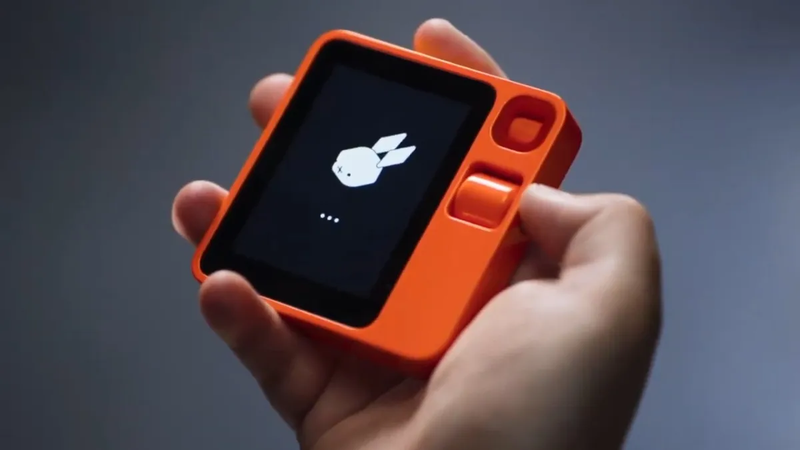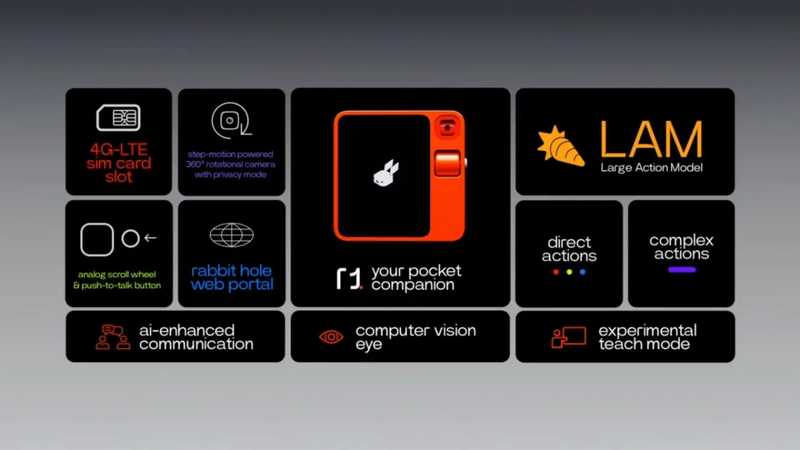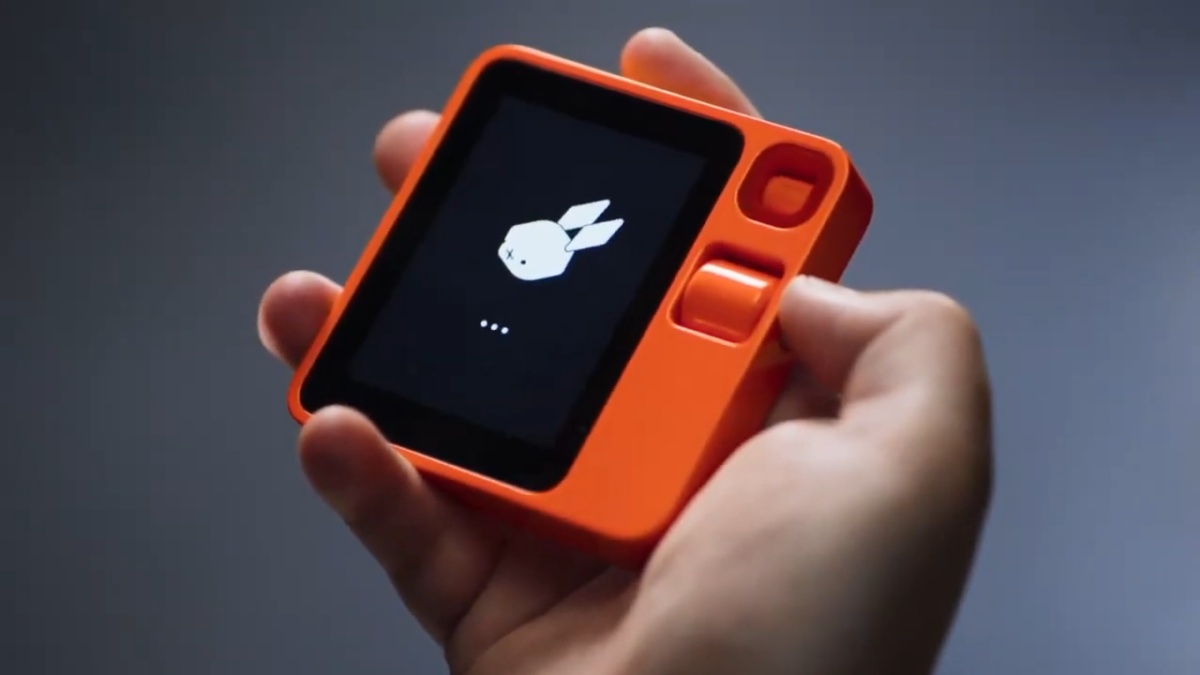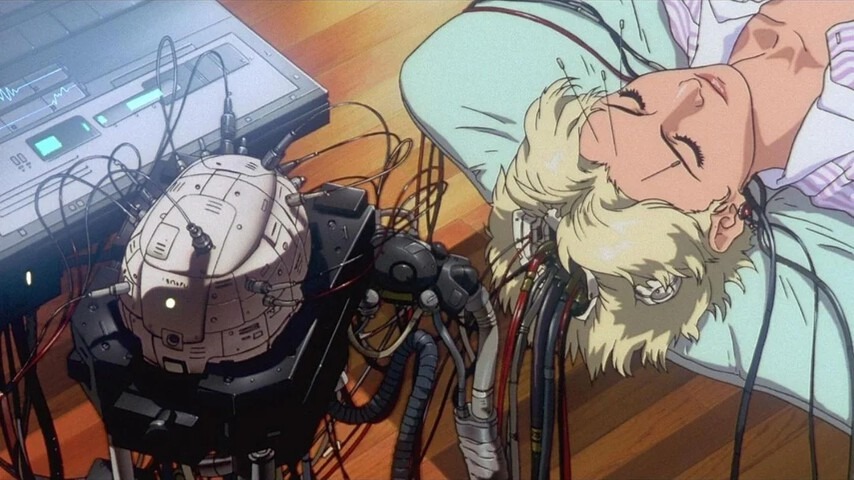The Rabbit R1, which was just unveiled at CES 2024 and sparked lively discussions on X (formerly Twitter), is a bright orange-red square pocket-sized device. What should we call this product? For now, the official term is "pocket companion." If 2023 marked the explosion of generative AIs, it appears that 2024 will be the year when generative AI applications take on a more tangible form, and chatbots transition into physical embodiments. In this context, let's tentatively refer to the Rabbit R1 as an "AI assistant."
 Doesn't its appearance instantly feel familiar? (Source: Rabbit R1)
Doesn't its appearance instantly feel familiar? (Source: Rabbit R1)
Jesse Lyu, the founder and CEO of Rabbit, has an interesting background. He previously founded Raven Tech, an AI startup focused on conversational AI operating systems, which was later acquired by Baidu, leading him to join Baidu. Subsequently, he founded Rabbit, also focusing on AI, and both startups were alumni of the Y Combinator accelerator.
The retro and nostalgic design of Rabbit R1 device comes from the well-known design firm Teenage Engineering. Its compact and cute appearance has made many people reminisce about their childhood memories of "tamagotchi." Its appeal is not just its cuteness; the main highlight of Rabbit R1 is the rabbit OS, an operating system built on the Large Action Model (LAM). Imagine shrinking an Alexa smart speaker to pocket size, capable of performing tasks ranging from simple searches to complex ones like booking Uber rides, restaurants, and travel itineraries. In the future, it will also allow users to train their own rabbit pets.
The size of the Rabbit R1 is roughly that of a stack of sticky notes, similar to the recently much-discussed Humane AI Pin. Unlike the Humane AI pin, the Rabbit R1 is also equipped with a 2.88-inch touchscreen, maintaining a sense interface familiarity that is more intuitive and in line with current usage habits. The Rabbit R1 also features a push-to-talk button for communicating with the AI assistant (specifically advertised as not passively listening to conversations), an analog scroll wheel, and a 360-degree rotating camera. Despite its small size, it is a highly interactive product. In addition, the R1 is equipped with a 2.3GHz MediaTek processor, 4GB of memory, 128GB of storage space, USB-C and SIM card slots, Wi-Fi support, and "all-day" battery life.
 The price is $199. (Source: Rabbit R1)
The price is $199. (Source: Rabbit R1)
Currently, Rabbit R1 is available for pre-order at a price of $199 (notably advertised as not requiring a service subscription fee, seemingly targeting Humane's AI Pin as a competitor). The company indicates that orders from the United States are expected to start shipping in March.
For me, whether it's the Rabbit R1 or the Humane AI Pin, the promise of a "screenless" future sounds quite appealing. However, I remain skeptical about the practicality of voice control. After all, giving voice commands in public still tests one's ability to withstand awkwardness and one's threshold for the expectation of privacy. Will we really all be wearing devices like this in the future? To truly replace smartphones in the future of AI assistant devices and to forge a different path in the connected metaverse (or what you might call "spatial computing"), I believe there will be numerous challenges on the road ahead, including usability, technical, social, and cultural challenges. What are your thoughts?

 Doesn't its appearance instantly feel familiar? (Source: Rabbit R1)
Doesn't its appearance instantly feel familiar? (Source: Rabbit R1) The price is $199. (Source: Rabbit R1)
The price is $199. (Source: Rabbit R1)

